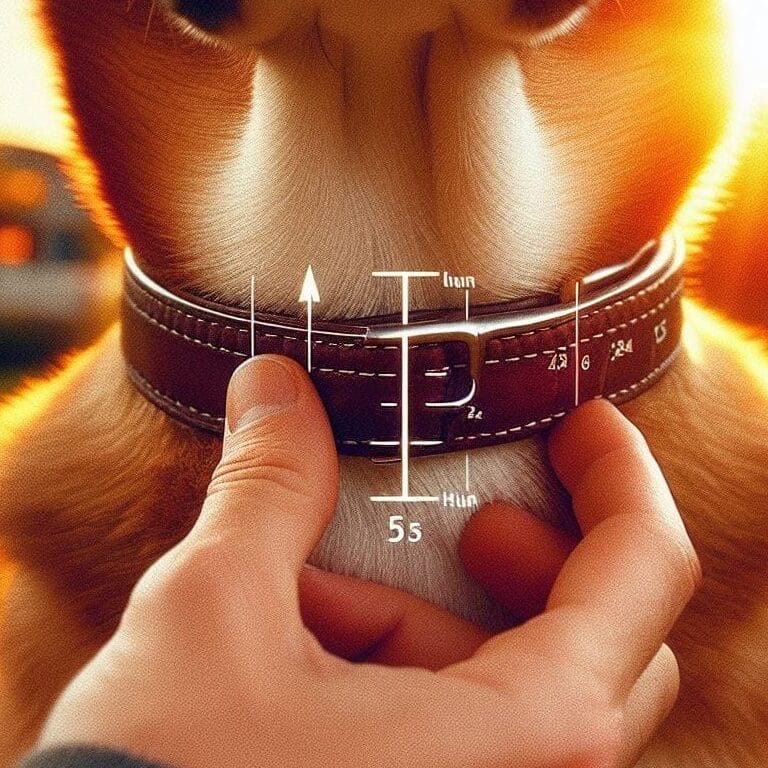Selecting the best collar for dogs with long hair requires careful consideration to ensure both comfort and functionality. Dogs with long hair can experience discomfort and tangling with the wrong collar, making it essential to choose a collar designed to address these issues. In this comprehensive guide, we will explore various types of collars, their benefits, and how to select the most suitable collar for your furry friend.
Understanding the Needs of Dogs with Long Hair
Dogs with long hair, such as Shih Tzus, Collies, and Afghan Hounds, have unique needs when it comes to collars. Their long, flowing coats can easily become tangled and matted if the wrong collar is used. Additionally, certain materials and designs can cause discomfort or even skin irritation. To avoid these issues, it is crucial to choose collars that are specifically designed for long-haired dogs.
Types of Collars Suitable for Long-Haired Dogs
1. Rolled Leather Collars
Rolled leather collars are among the best options for dogs with long hair. These collars are crafted from soft, high-quality leather that is rolled into a round shape. This design minimizes the amount of surface area in contact with the dog’s fur, reducing the risk of hair tangling and matting.
- Advantages:
- Gentle on the fur and skin
- Durable and long-lasting
- Stylish and classic appearance
- Disadvantages:
- Can be more expensive than other types
- Requires regular maintenance to keep the leather in good condition
2. Martingale Collars
Martingale collars are designed to provide more control without causing discomfort or tangling. These collars have a limited-slip design, which means they tighten slightly when the dog pulls but do not choke or cause pain.
- Advantages:
- Prevents hair tangling due to minimal contact
- Provides better control without choking
- Ideal for training and walking
- Disadvantages:
- Not suitable for leaving on the dog all the time
- May require more frequent adjustments
Nylon Flat Collars with a Smooth Finish
For a budget-friendly option, nylon flat collars with a smooth finish are an excellent choice. These collars are lightweight and durable, making them suitable for everyday use. The smooth finish helps reduce friction against the dog’s fur, minimizing tangles.
- Advantages:
- Affordable and widely available
- Easy to clean and maintain
- Variety of colors and designs
- Disadvantages:
- May not be as durable as leather
- Buckles and hardware can sometimes cause tangles
Key Features to Look for in Collars for Long-Haired Dogs
1. Smooth and Rounded Edges
Collars with smooth and rounded edges are essential for long-haired dogs. Sharp or rough edges can catch and pull on the fur, causing pain and matting. Always inspect the edges of a collar to ensure they are smooth and well-finished.
2. Adjustable Fit
An adjustable fit is crucial for ensuring the collar sits comfortably on your dog’s neck without being too tight or too loose. Adjustable collars can accommodate changes in your dog’s size and coat thickness, providing a custom fit.
3. Lightweight Materials
Lightweight materials are preferable for long-haired dogs, as heavy collars can weigh down the fur and cause discomfort. Nylon and lightweight leather are excellent choices for maintaining your dog’s comfort.
4. High-Quality Buckles and Hardware
The quality of the buckles and hardware is vital for the durability and safety of the collar. Look for rust-resistant metal or sturdy plastic buckles that can withstand everyday wear and tear.
How to Properly Fit a Collar on a Long-Haired Dog
1. Measure Your Dog’s Neck
Before purchasing a collar, measure your dog’s neck using a flexible tape measure. Place the tape measure around the base of the neck, ensuring it is snug but not tight. Add two inches to this measurement to account for comfort and growth.
2. Choose the Right Width
The width of the collar should be proportional to your dog’s size. For long-haired dogs, a narrower collar is often preferable to prevent excessive fur flattening and tangling.
3. Regularly Check the Fit
As your dog’s coat grows and changes, regularly check the fit of the collar to ensure it remains comfortable. Adjust the collar as needed to prevent it from becoming too tight or too loose.
Additional Tips for Maintaining Your Dog’s Collar and Coat
1. Regular Grooming
Regular grooming is essential for long-haired dogs. Brush your dog’s coat daily to remove tangles and prevent matting. Pay special attention to the area around the collar to ensure it remains clean and tangle-free.
2. Clean the Collar Frequently
Clean your dog’s collar frequently to remove dirt, oils, and debris that can accumulate. Use a mild soap and warm water, and allow the collar to dry completely before putting it back on your dog.
3. Rotate Collars
Consider rotating between two or more collars to give your dog’s fur a break. This practice can help reduce the risk of matting and allow for thorough cleaning of each collar.
Conclusion
Selecting the best collar for dogs with long hair involves understanding their unique needs and choosing a collar that minimizes discomfort and tangling. Rolled leather collars, martingale collars, and nylon flat collars with smooth finishes are all excellent options. Look for collars with smooth edges, adjustable fits, and lightweight materials to ensure your dog’s comfort and coat health. Regular grooming and collar maintenance are essential for keeping your long-haired dog looking and feeling their best.
Follow us on Quora : Tayyab Ali
Follow us on Linkedin: Tayyab ALi



